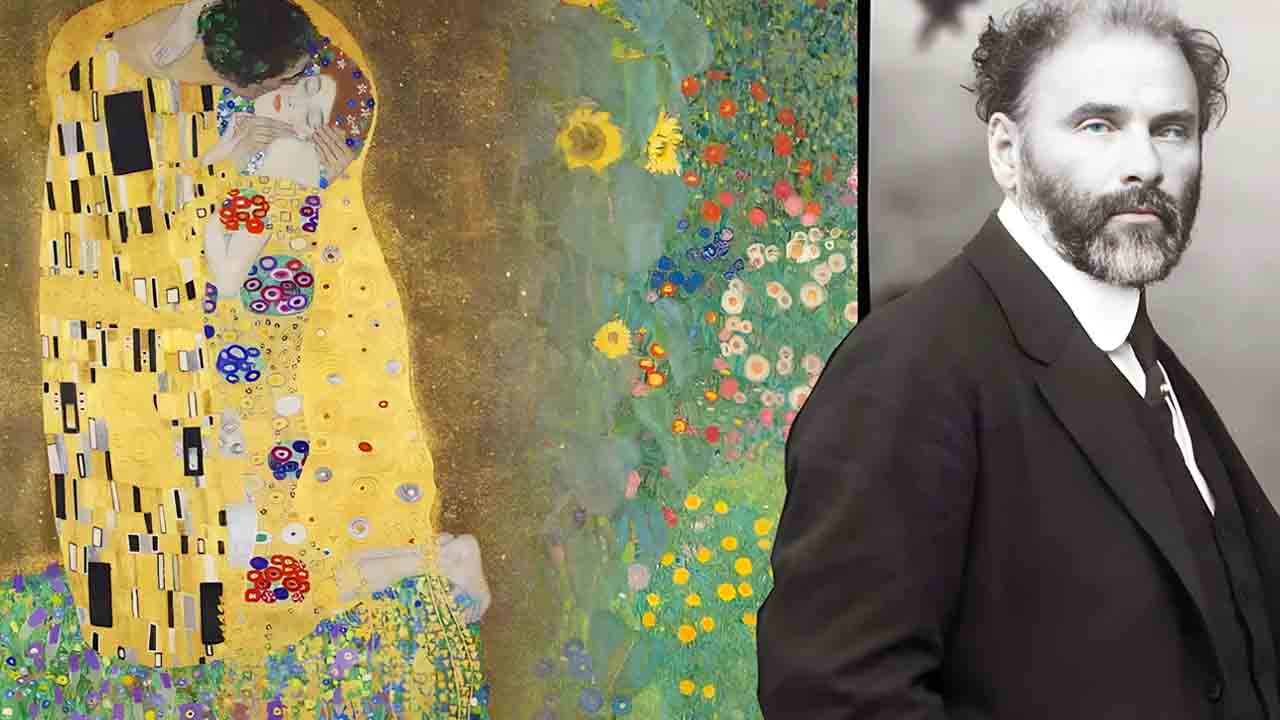Gustav Klimt, a prominent figure, in Viennese Art Nouveau is celebrated for his sensuous paintings that blend forms with decorative motifs. Klimt “Golden Era,” characterized by his use of gold leaf. He made some of the iconic and visually captivating artworks of the early 20th century.
Early Artistic Journey and the Vienna Secession
Born on July 14 1862 near Vienna in Baumgarten Klimt initially pursued a career in painting. However he later became one of the founding members of the Vienna Secession movement—an aiming to break free from academic art. During this phase Klimt artistic endeavors reflected a growing fascination with symbolism and depictions of the form—themes that would continue to shape his works.
The Era of Gold
Gustav Klimt Golden Era emerged around 1898. Found its pinnacle in masterpieces like “The Kiss” (1907–1908) and “Portrait of Adele Bloch Bauer I” (1907) also known as “The Woman in Gold.” These renowned artworks are distinguished by their utilization of gold leaf, intricate patterns and evocative subject matter. By amalgamating influences, from Byzantine, Egyptian art traditions Klimt created an aesthetic that exuded opulence and allure.
Symbolism and Sensuality
Klimt art is known for its exploration of sensuality and its portrayal of themes, like love, mortality and renewal. He skillfully incorporates elements such as spirals and squares often depicting. The form to delve into the depths of human psychology and sexuality. Notable pieces like “Danaë” and “Judith and the Head of Holofernes.” Klimt ability to blend sensuality with symbolism making statements about empowerment and sexuality.
Works and Natural Landscapes
In his years Klimt artistic focus shifted towards abstraction with a greater emphasis on capturing natural landscapes. These paintings, including the enchanting “The Birch Forest” series reveal another facet of Klimt brilliance by showcasing his talent in capturing the serenity and magnificence of nature.
Legacy and Lasting Influence
Klimt passing in 1918 marked the end of an era; however his impact on the art world continues to endure. His distinct style characterized by hues, intricate patterns and sensual symbolism solidifies his position as a figure, within the Art Nouveau movement. Klimt work continues to captivate audiences through its beauty depth and exploration of the experience.
Gustav Klimt impact, on art goes beyond his golden paintings. His artwork delves into the depths of emotions, sexuality and the wonders of nature. By integrating color, patterns and gold Klimt transports us to a realm where art becomes a visual journey. Most significant aspects.

